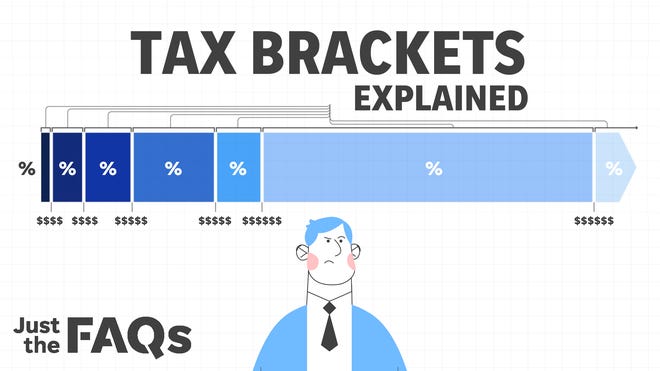House Minority Leader Vincent Candelora during a budget press conference on May 2, 2023 Credit: Hugh McQuaid / CTNewsJunkie
A two-year, $51.9 billion budget package proposed Tuesday by House Republicans accelerates the implementation of income tax cuts proposed by the governor while boosting state spending by 1% to support local schools.
The tax and spending plan, outlined during a morning press conference in the Legislative Office Building, preserves Gov. Ned Lamont’s proposed reduction of the 5% income tax rate to 4.5% and the 3% to 2%, but makes those cuts retroactive to the beginning of the year. The plan also includes a recapture provision ensuring that top earning taxpayers will not benefit from the cuts.
The proposal comes from one of two Republican minority caucuses. Senate Republicans opted not to participate and issued a statement promising to seek even deeper tax reductions.
In many ways, the House Republicans’ plan shores up proposals made by Lamont, a fiscally moderate Democrat, in February. Since then, the legislature’s Democratic majority has produced a tax plan that scaled back some of Lamont’s income tax cuts in favor of other relief proposals while employing off-budget accounting techniques deemed “gimmicks” by the governor in an effort to increase municipal aid.
The GOP plan is the first complete budget package from minority Republicans since 2017, when a more evenly divided legislature adopted the state spending cap, which Lamont has sought to preserve.
On Tuesday, House Minority Leader Vincent Candelora said those 2017 policies have resulted in historic surpluses, responsible spending, and payments toward the state’s unfunded pension liabilities.
“So five years later we are here today to renew that call because we all know that when Republicans are in the room and part of the conversation, good things happen,” Candelora said.
Rep. Tammy Nuccio, R-Tolland, and Rep. Holly Cheeseman, R-East Lyme, the ranking Republicans on the Appropriations and Finance Committees respectively, said their plan avoided any so-called budget “gimmicks.”
The Republican proposal includes provisions that will appeal to many in the legislature.
The recommendations included $290 million to support boosts in Education Cost Sharing grants to towns, $50 million for special education costs and another $20 million to prevent the impact of previously scheduled decreases in state support for towns considered to be over-funded by the state. Nuccio said those increases necessitated spending more money than Lamont had proposed.
“Education, especially in the elementary and secondary areas are a priority for us,” she said. “It is the pathway out of poverty, it is the pathway to better jobs, it is the pathway to success as an adult.”
Meanwhile, the plan addresses calls from many lawmakers to provide additional support for a network of nonprofits that provide much of the social services once offered by state government. The proposal recommends a 2.5% funding increase in each year of the budget where Lamont had called for level funding and the Appropriations Committee had provided a 1% increase.
In a statement, Gian Carl Casa, president of the CT Community Nonprofit Alliance, said the increase was a good start.
“We are encouraged by the House Republican proposal and we hope the support for nonprofits on both sides of the aisle will result in a bi-partisan budget that provides the 9 and 7 percent increases community nonprofits need,” he said.
Candelora told reporters his caucus’s plan was meant to mirror that of Lamont while acknowledging priorities important to majority Democrats.
Where many legislative Democrats had sought to establish a permanent version of a one-time $250 child tax credit, which the state offered last year, House Republicans have called for a new deduction allowing parents to reduce their taxable income by up to $2,000 per child. How much benefit families receive as a result of the reduction would depend on their overall income and number of children.
“I think it recognizes what they have championed and we are trying to bring both the Democrats and the governor to the table with this tax package,” he said.
The Republican proposal is likely to find opposition in its funding recommendations for higher education institutions, another point of contention in this year’s budget negotiations. Last week, representatives of the Connecticut State Colleges and Universities system argued that proposals from both Lamont and legislative Democrats would force the system to raise tuition and layoff staff.
They would not receive additional funding under the Republican plan, which generally matches Democratic proposals in the first year. But the funding would come with strings attached in the second year, when the state Office of Policy and Management would withhold one-third of the funding if the schools had not demonstrated certain efficiencies. Candelora said that closures at underperforming campuses could potentially be on the table in some instances.
“Have they right-sized themselves? Are the administrative costs in line? Are the student-faculty ratios still balanced?” Candelora said. “All of that needs to be looked at because our education systems can’t be running that level of deficits and we can’t just come up with $300 million.”
During the press conference, Republican legislators described the governor as receptive to their ideas and Lamont released a statement, which generally lauded Connecticut’s fiscal position.
“To continue that momentum, we need to pass an honestly balanced budget that invests in Connecticut’s growth, avoids the gimmicks and mistakes of the past, and adheres to our spending and revenue caps,” Lamont said.
Meanwhile, Democratic legislative leaders lauded House Republicans for producing a complete budget proposal. In a statement, House Speaker Matt Ritter worried the GOP plan relied too heavily on unspecified savings to make the numbers add up.
“Between the Appropriations and Finance packages, the Governor’s proposal and now the House Republicans’ plan, we are in a stronger position to achieve our goal: a bipartisan budget,” Ritter said.
Senate President Martin Looney questioned whether Senate Republicans would follow the lead of their House counterparts. Looney said Democratic leaders would evaluate the Republican proposals as they had in 2017.
“Our philosophy then was ‘a good idea is a good idea’ and that remains true today. We Democrats will review the House Republican budget proposal to find areas of potential agreement and points for additional conversation,” Looney said.




